ID-DOC: general search
Here you can enter a general keyword and perform a general search.
??? What are these question marks doing here? These represent tools which we know by a Dutch or French name, but who's English name is yet unknown. Suggestions are always welcome!
If you cannot find a certain tool, or if you experience other problems with this page, please let us know at info@mot.be.
Search for: tool
Showing search results 951 - 1,000
1,492 results found
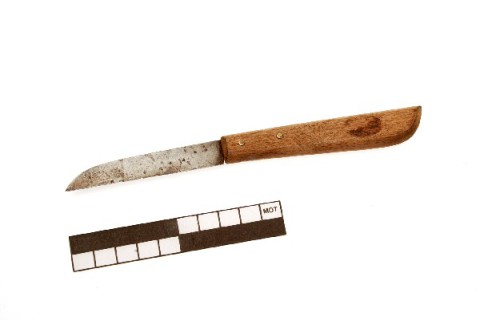
Paring knife
Vegetables are peeled with a paring knife. It is a small (approx. 16-18 cm)
and light (approx. 20-25 gr) knife with a smooth edge, which lies easily in
the hand. The blade can take different shapes: it can look like a mini
French cook's knife, the edge can be straight or curved, but it always has
a sharp point to remove pits. The handle can be wood or plastic. A special
model consists of a paring knife with a movable guide. Sometimes the paring
knife is combined with a bottleopener. [MOT]
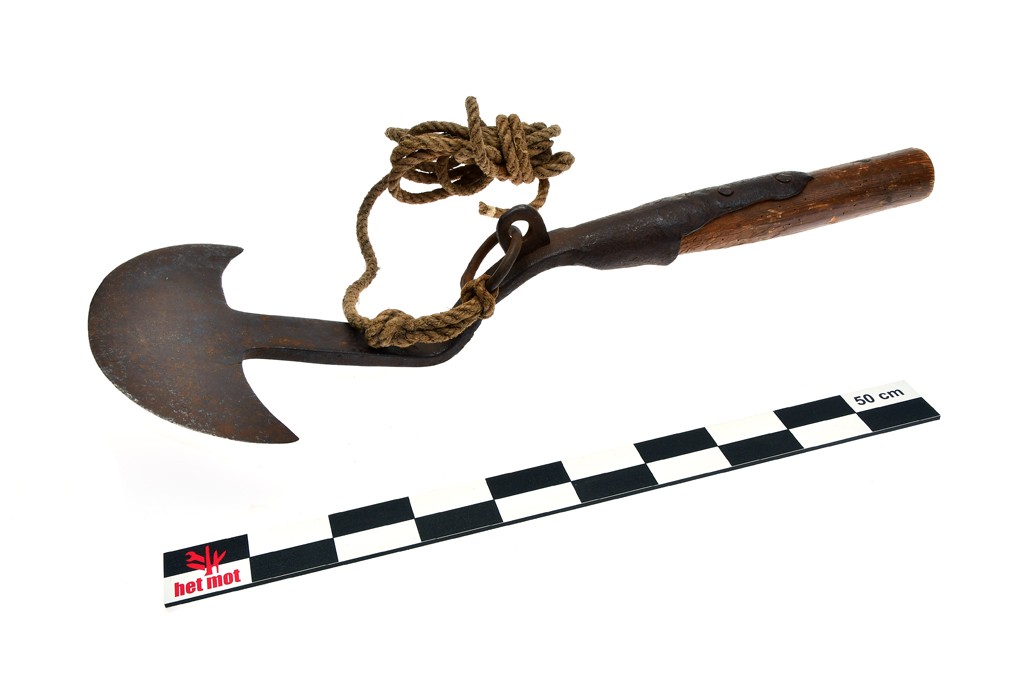
Paring spade
This text can only be consulted in Dutch
<https://www.mot.be/resource/Tool/paring-spade?lang=nl>
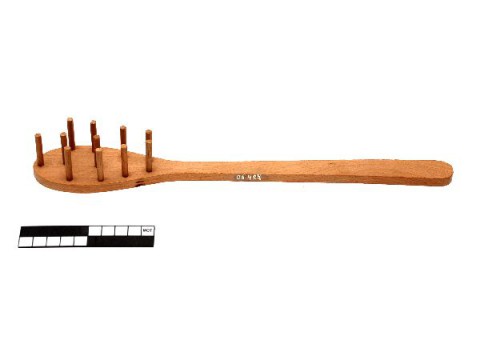
Pasta spoon
Wooden, stainless steel or plastic spoon with long handle (approx. 25 cm)
and 8-10 blunt teeth (approx. 2-3 cm) for removing spaghetti from the
boiling water and draining it. Some models have an opening in the center of
the spoon. The pasta spoon is placed in the pan of the freshly cooked
spaghetti and turned around so that the teeth take the strings of spaghetti
with them. Take it all over the pan to let it drain. See also spaghetti
tongs used after draining spaghetti in a colander. [MOT]
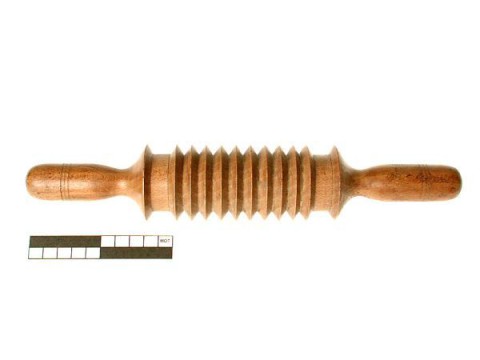
Paste rolling pin
This text can only be consulted in Dutch
<https://www.mot.be/resource/Tool/paste-rolling-pin?lang=nl>
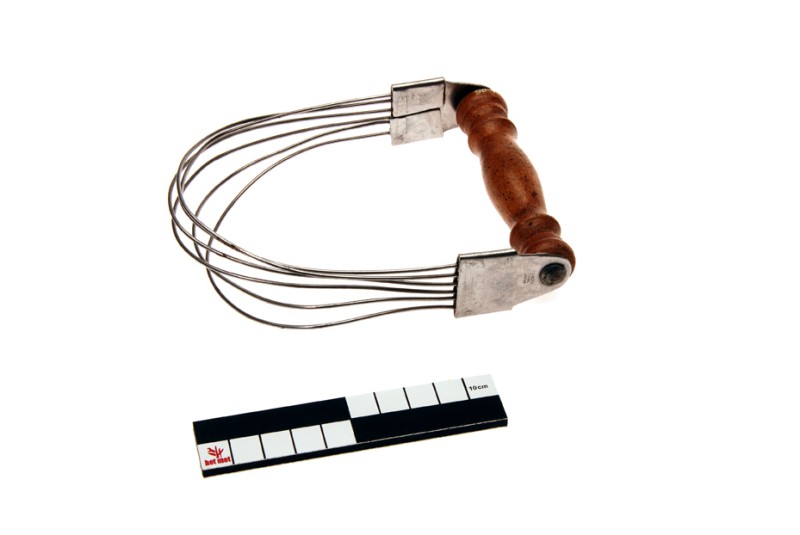
Pastry blender
With a pastry blender you can quickly make a crumbly mass from flour and
pieces of butter, without this mixture getting hot, for eg crust or
shortcrust pastry. It consists of six relatively flexible steel wires that
are bent in a U-shape; between the ends there is a wooden or plastic
handle, which is sometimes provided with a thumb rest. By moving the pastry
blender up and down in the mass, the ingredients are mixed and the pieces
of butter or fat finely divided. Instead of the wires, there can also be
various steel blades with a curved cut. These are rigid and therefore
better suited for cutting hard chunks of fat. See also the dough grater.
[MOT]
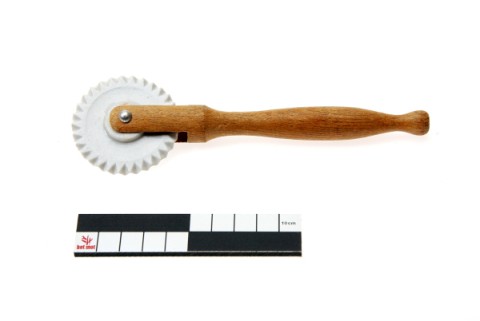
Pastry cutting wheel
This text can only be consulted in Dutch
<https://www.mot.be/resource/Tool/pastry-cutting-wheel?lang=nl>
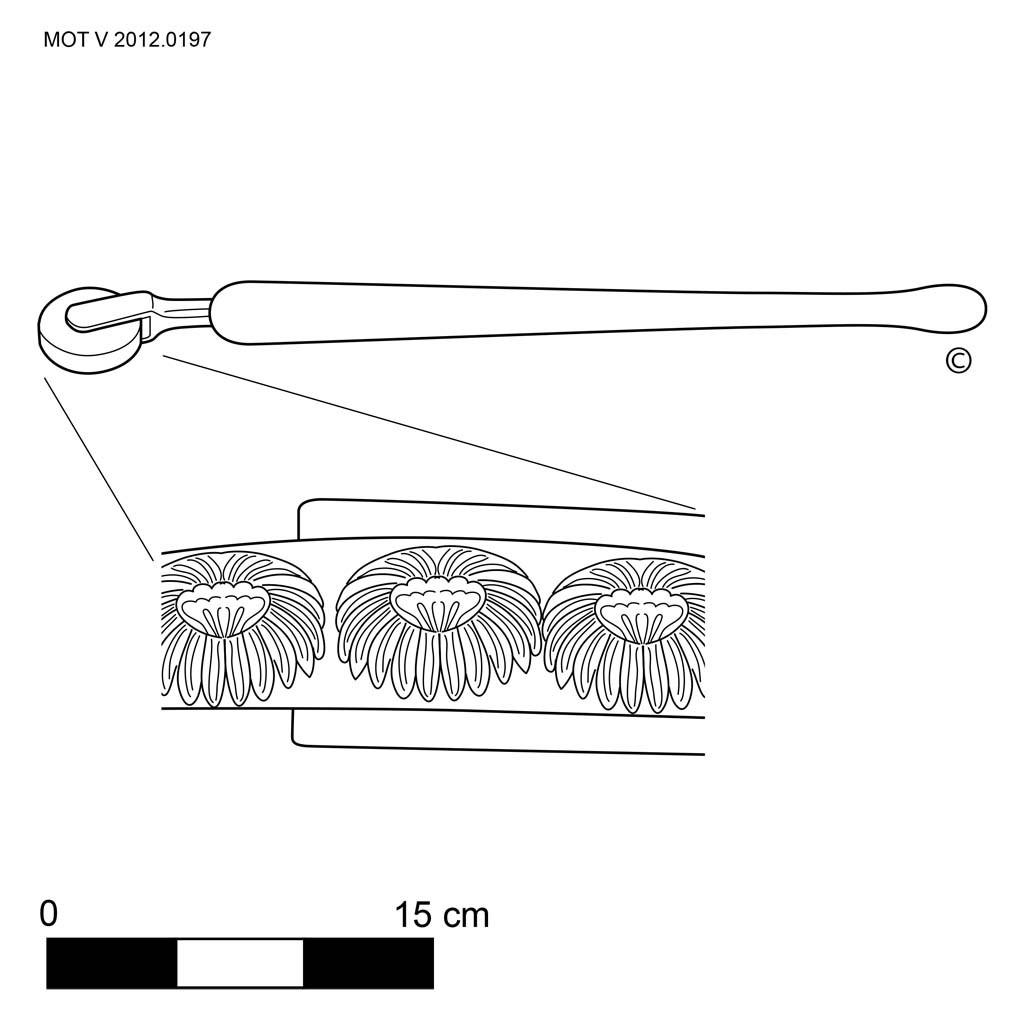
Pattern roll (bookbinder)
This text can only be consulted in Dutch
<https://www.mot.be/resource/Tool/pattern-roll-bookbinder?lang=nl>
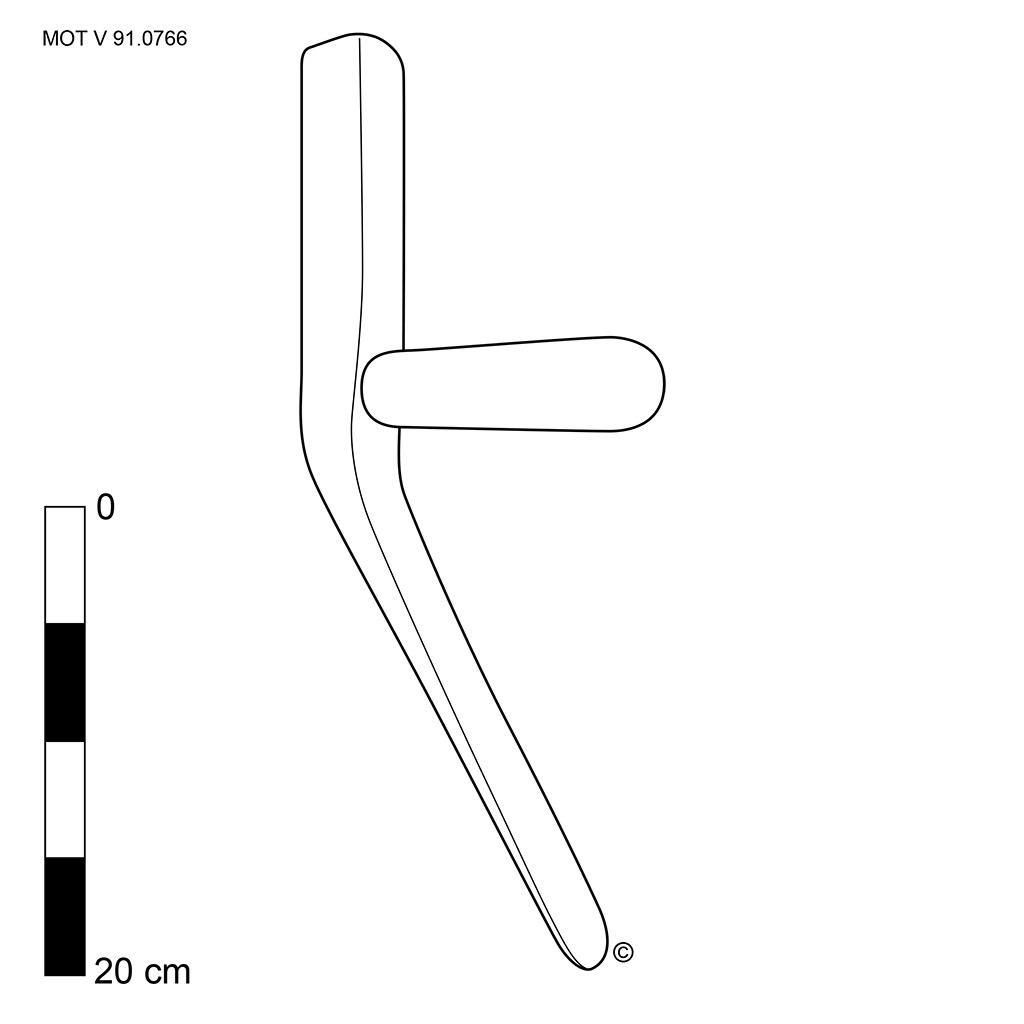
Paviour's hammer
This text can only be consulted in Dutch
<https://www.mot.be/resource/Tool/paviour-s-hammer?lang=nl>
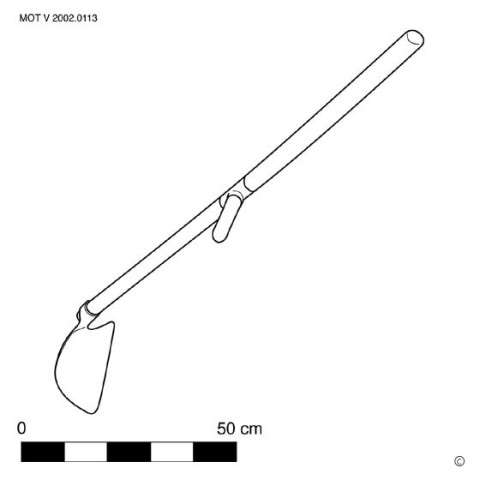
Peat scyte
This text can only be consulted in Dutch
<https://www.mot.be/resource/Tool/peat-scyte?lang=nl>
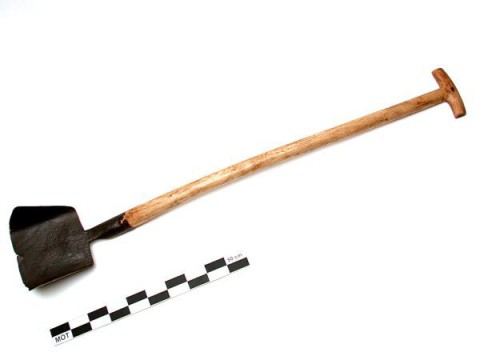
Peat spade
After the field has been mowed with the peat scythe or toothed sickle and
the turf removed with the paring spade, the peat-cutter uses the peat spade
to cut peat, which after drying is used as fuel or fertilizer. It is an
iron blade spade (approx. 15 x 20 cm), with one or two raised edges, which
is slightly curved (approx. 10-25 °) in relation to a knob or T-handle
(75-120 cm) ). The cut of the blade can be straight or pointed and, like
the spade, is inserted vertically (1) (approx. 20-25 cm) into the ground.
The result is a clod in the shape of a parallelepiped (approx. 20 x 15 x 10
cm). The raised edges serve, in addition to cutting the peat, to keep the
clod together. [MOT] (1) A spade is used to cut peat horizontally. (HOVE:
23; BORCHGREVINK: 70).
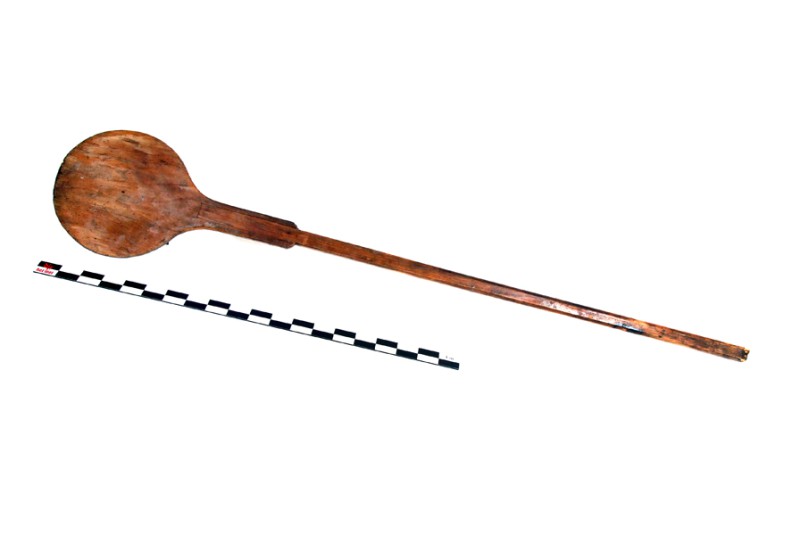
Peel
An oven peel is a wooden or metal hand tool (approx. 175-265 cm long) with
an oval or rectangular blade (approx. 15-35 cm wide) on a long handle with
which the baker used to oven the bread. The handle is long so that you can
reach the back of the oven. [MOT]
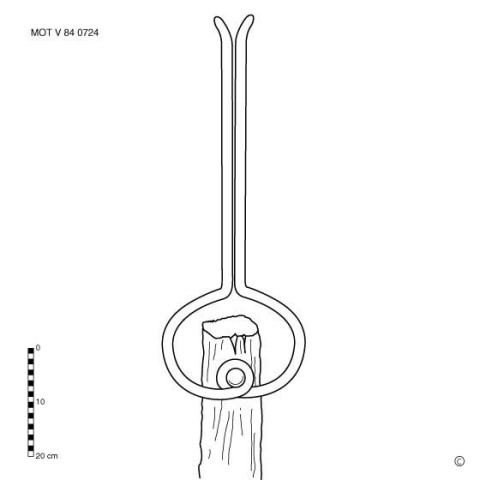
Peeling brake
This text can only be consulted in Dutch
<https://www.mot.be/resource/Tool/peeling-brake?lang=nl>
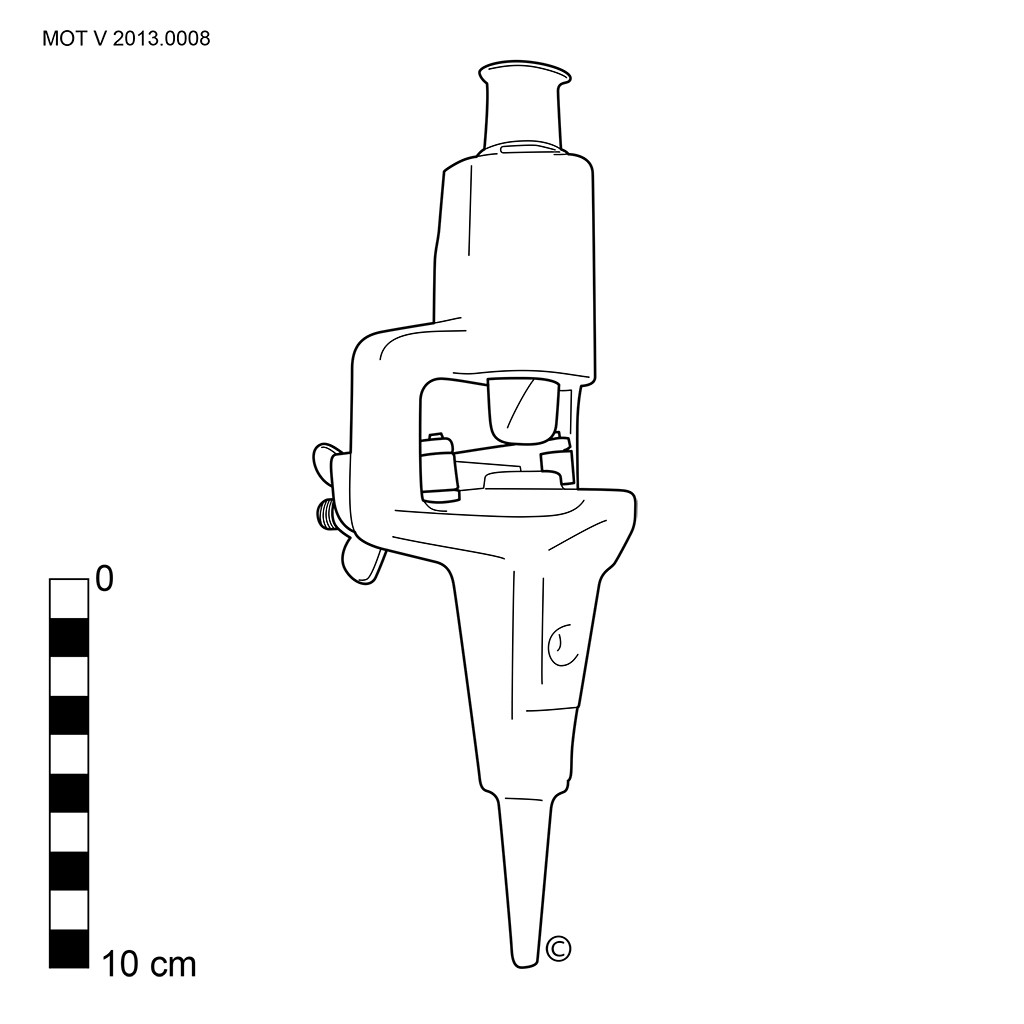
Peening machine
This text can only be consulted in Dutch. This device is used to sharpen
the scythe or Flemish scythe blade on the same principle as the whetting
anvil and the whetting hammer, but it works faster and easier. [MOT]
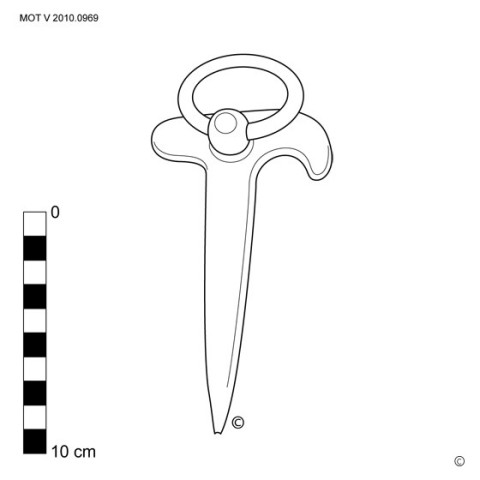
Peg of emergency
This text can only be consulted in Dutch
<https://www.mot.be/resource/Tool/peg-of-emergency?lang=nl>
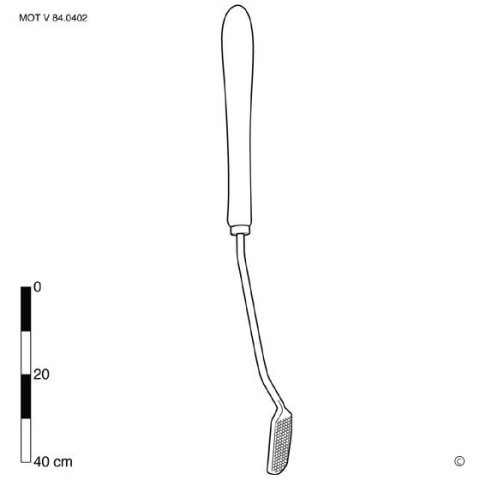
Peg rasp
This text can only be consulted in Dutch
<https://www.mot.be/resource/Tool/peg-rasp?lang=nl>
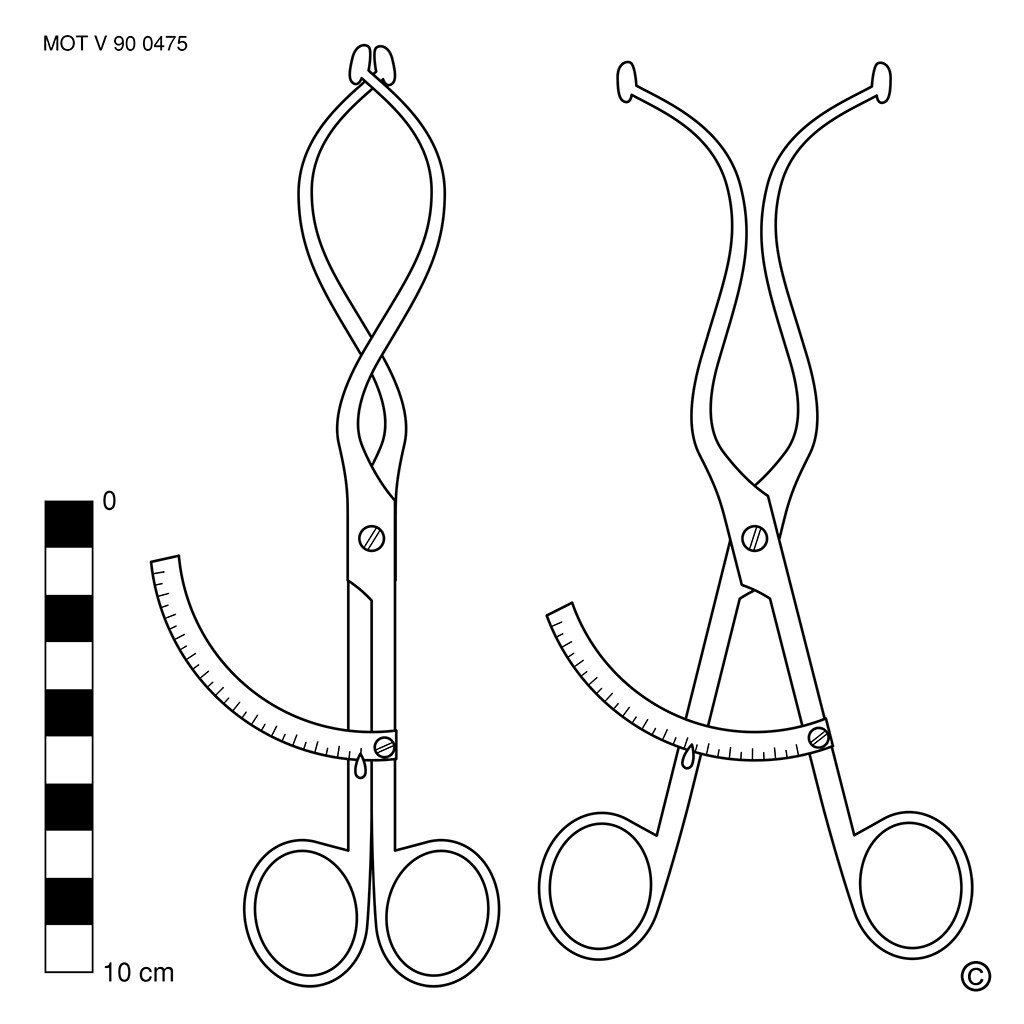
Pelvimeter
This text can only be consulted in Dutch
<https://www.mot.be/resource/Tool/292?lang=nl>
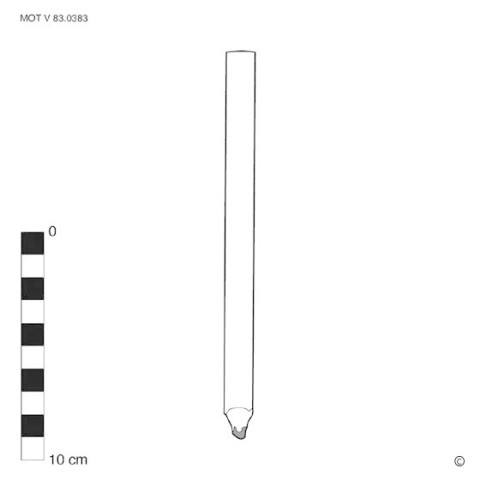
Pencil
This text can only be consulted in Dutch
<https://www.mot.be/resource/Tool/pencil?lang=nl>
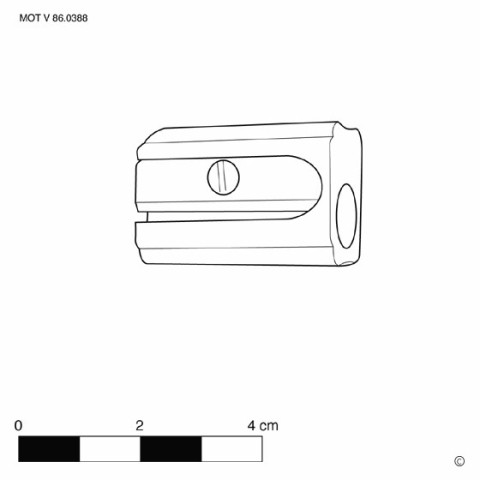
Pencil sharpener
This text can only be consulted in Dutch
<https://www.mot.be/resource/Tool/pencil-sharpener?lang=nl>
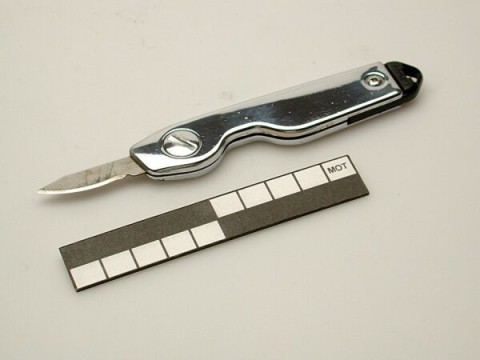
Penknife
The penknife originally served to cut the tip of a quill pen and to scrape
away ink stains from parchment or paper, like an eraser knife. It has a
narrow, sharp blade measuring between 2.5 cm and 4.5 cm in length. The
penknife is now usually a cutting knife, exceptionally with a replaceable
blade, which is used for all kinds of purposes, including as a nail knife.
A light (approx. 10 g) model, from the Christy Company, contains a blade
that can be slid into the handle in four positions to determine the length
of the blade. In addition to the large blade, many pocket knives also have
a small sharp blade that is used as a pen knife. Not to be confused with
the scalpel. [MOT]
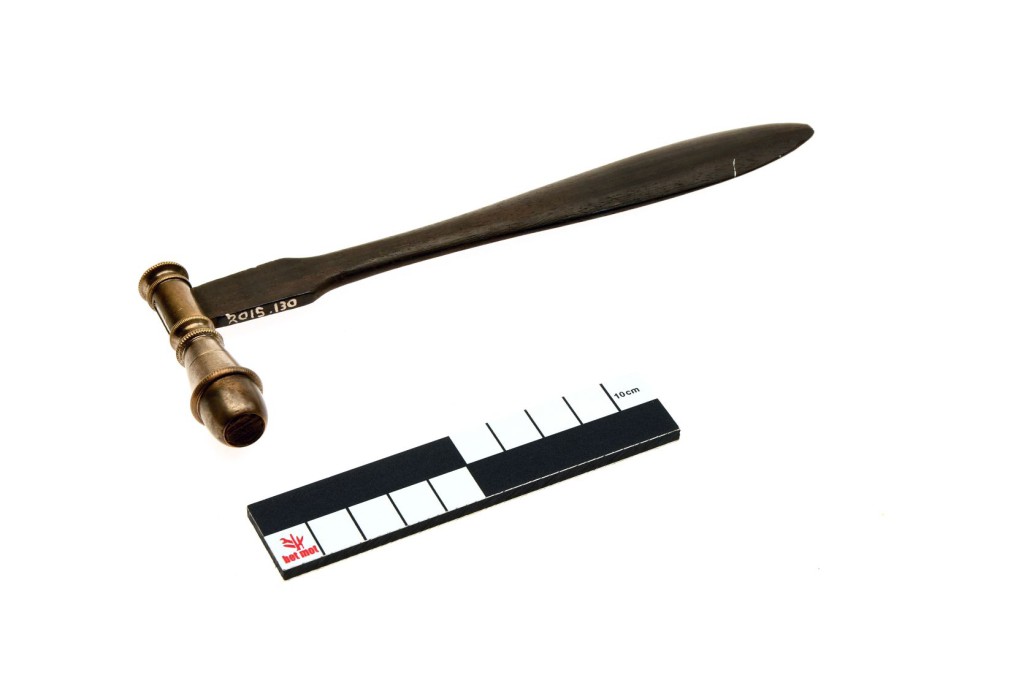
Percussor
This tool desciption is not yet translated from the Dutch version. See also
the reflex hammer. [MOT]
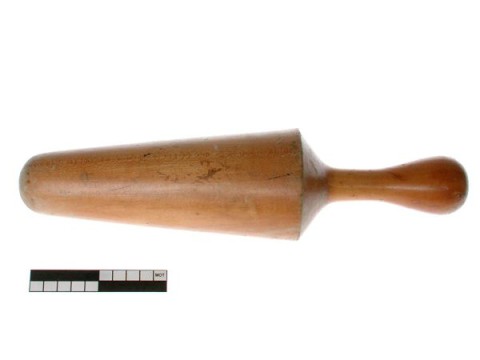
Pestle for food grinder
Wooden pestle used to press food into the funnel of a grinder (e.g. meat
grinder, rotary grater, etc.). The pestle always takes the shape of the
funnel of the mill it belongs to. There are cylindrical, conical and
parallelepiped-shaped pistils. The cone-shaped pestle is distinguishable
from the cone-shaped pestle of the potato mash strainer which is smaller
and the mould for cardboard boxes. [MOT]
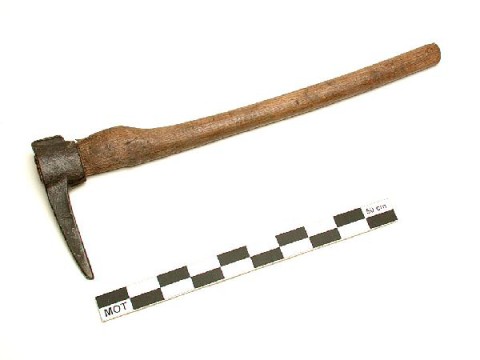
Pickaxe
This text on the pickaxe of a miner can only be consulted in Dutch. [MOT]
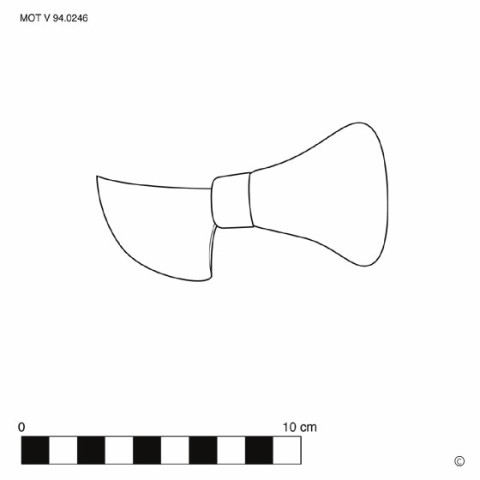
Picking knife (basket maker)
A basket maker's picking knife has a wide, curved or semicircular (approx.
4-7 cm) blade with a sharp outside. The basket maker uses the knife to cut
off the twigs sticking out of a woven basket. He places the cut on the twig
and cuts it off by an axial movement (cf. the curved knife). The picking
knife is sometimes replaced by a shoe knife (1). [MOT] (1) AUDIGER: 3;
LEROUX & DUCHESNE: 4.
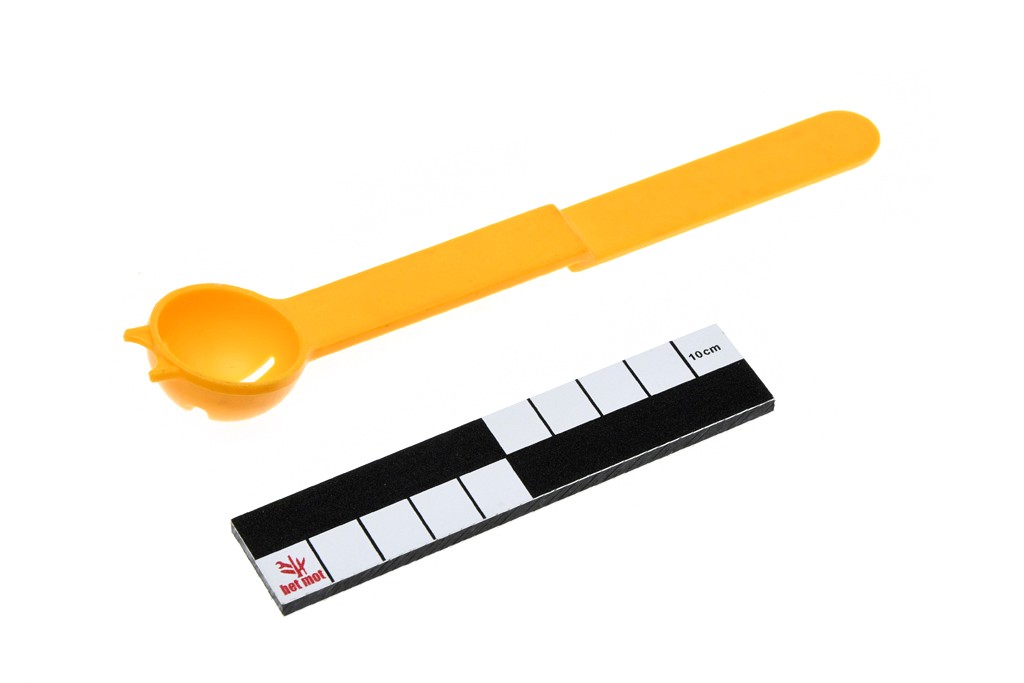
Pickle spoon
This text can only be consulted in Dutch
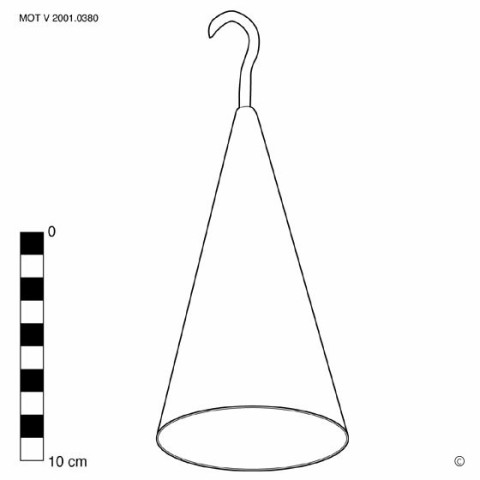
Pig scraper
This text can only be consulted in Dutch
<https://www.mot.be/resource/Tool/625?lang=nl>
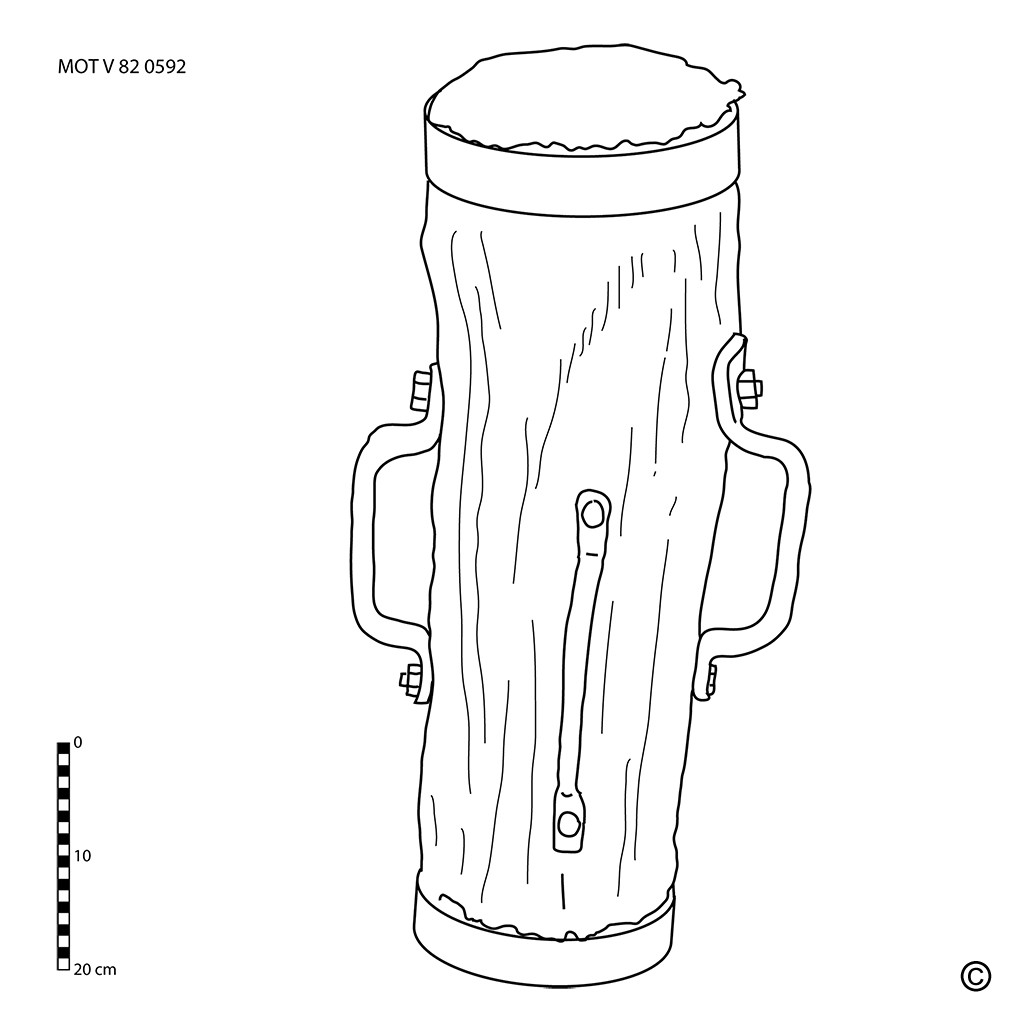
Pile-driver
This text can only be consulted in Dutch
<https://www.mot.be/resource/Tool/pile-driver?lang=nl>

Pill counter
This text can only be consulted in Dutch
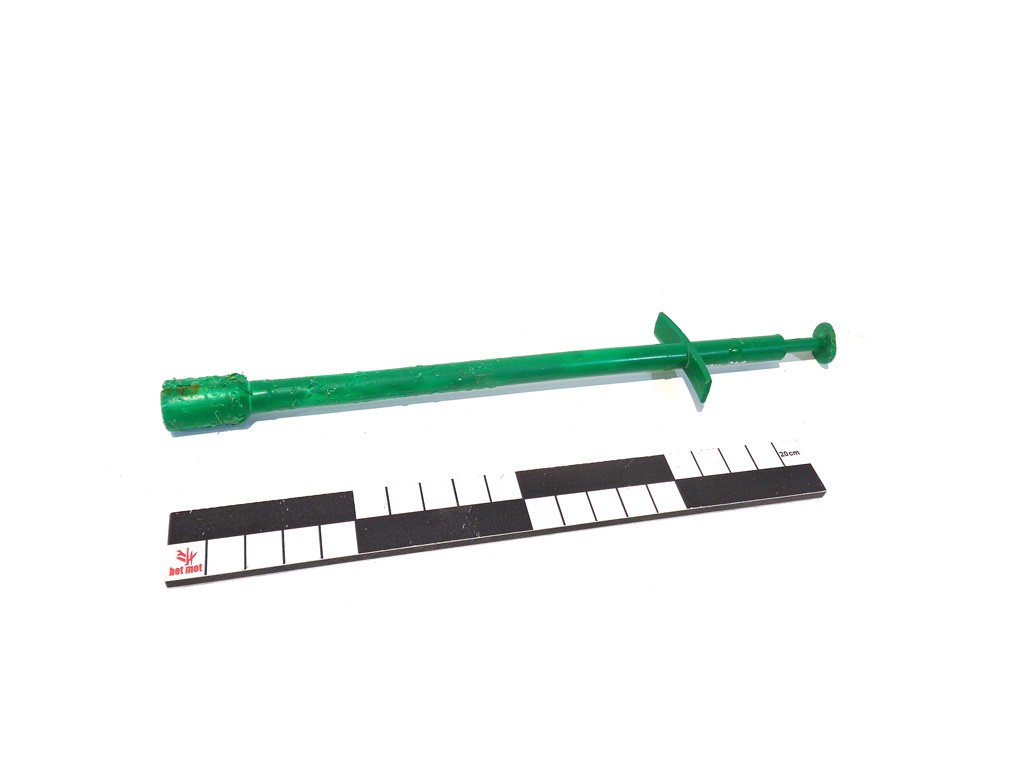
Pill dispenser
This text can only be consulted in Dutch
<https://www.mot.be/resource/Tool/pill-dispenser?lang=nl>
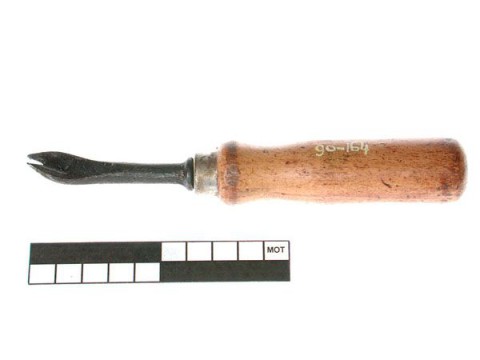
Pin lifter
The pin lifter is a hand tool used by the shoemaker and upholsterer to pull
out nails. It is a small (about 20 cm long) crow bar that sticks into a
wooden handle. [MOT]
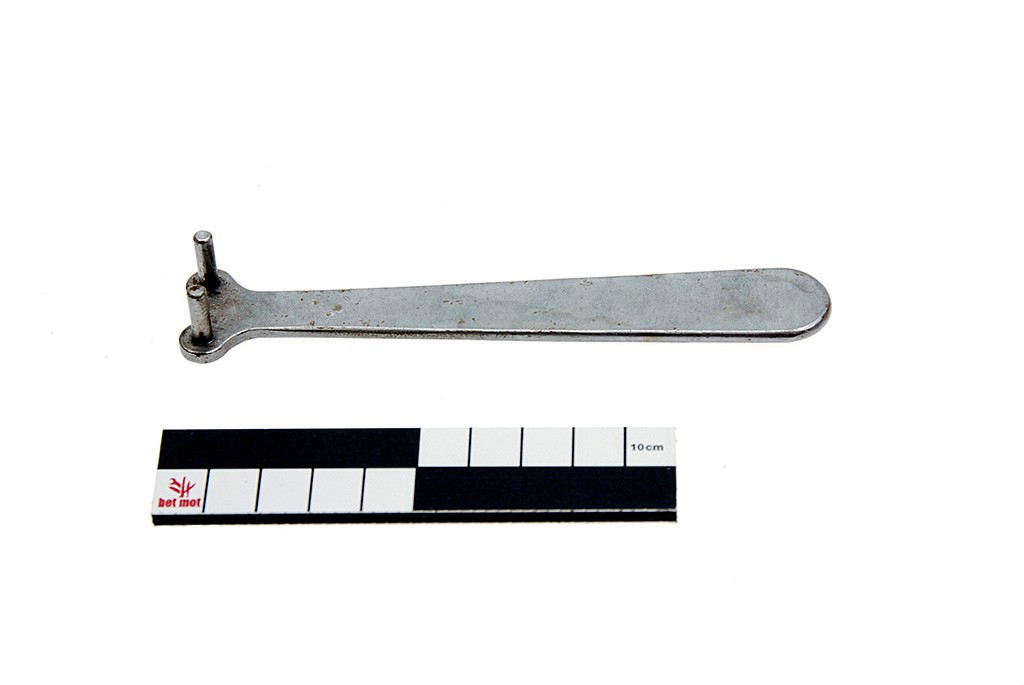
Pin spanner
This text can only be consulted in Dutch
<https://www.mot.be/resource/Tool/pin-spanner?lang=nl>
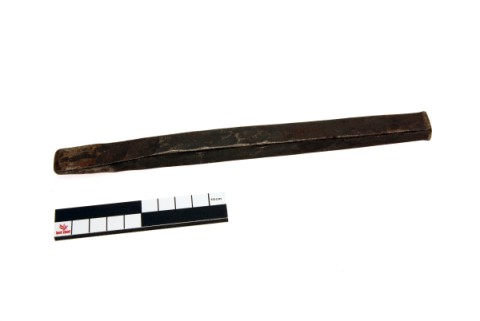
Pinch bar
The pinch bar
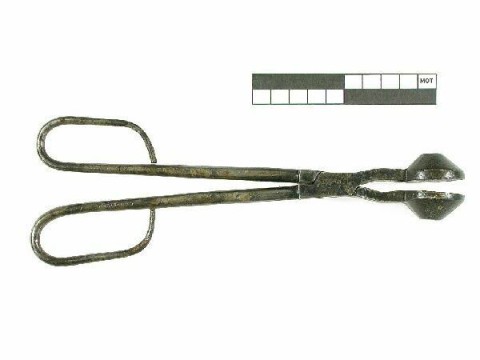
Pinching iron
This text can only be consulted in Dutch
<https://www.mot.be/resource/Tool/pinching-iron?lang=nl>
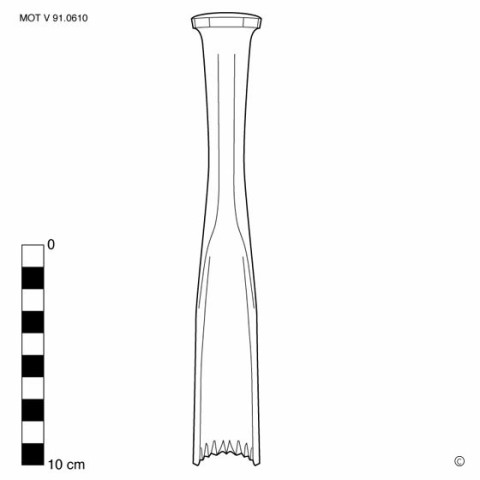
Pinching-iron punch
Leather workers such as the saddler use this hand tool to cut decorative
shapes from the leather. It is a steel chisel (approx. 10-15 cm long)
without handle with a serrated or corrugated blade that can be flat and
flared, semicircular or circular (cf. the punch). The cutting chisel is
placed on the leather and hit with a hammer; the desired shape is cut into
the leather. [MOT]
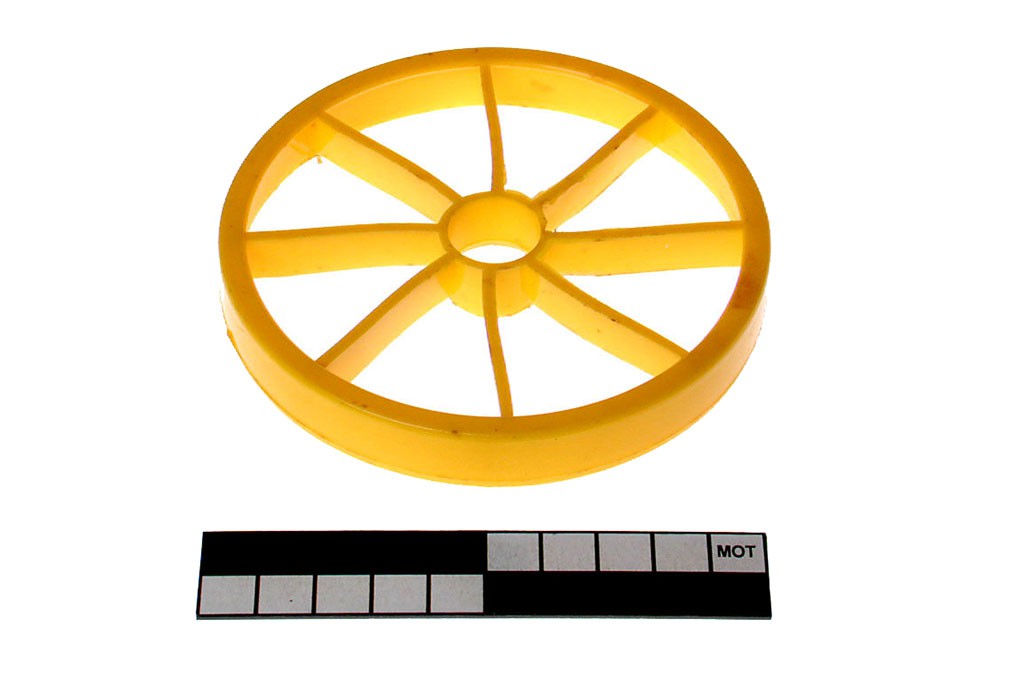
Pineapple wedger
This text can only be consulted in Dutch
<https://www.mot.be/resource/Tool/pineapple-wedger?lang=nl>
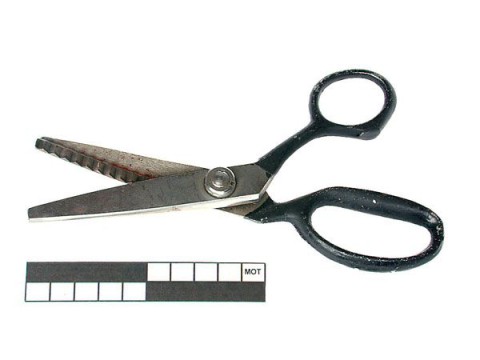
Pinking shears
Pinking shears are scissors with thick (approx. 4-7 mm), blunt blades with
a triangular serrated edge. When you use it to cut into a piece of fabric,
a zigzag notch appears that prevents fraying. [MOT]
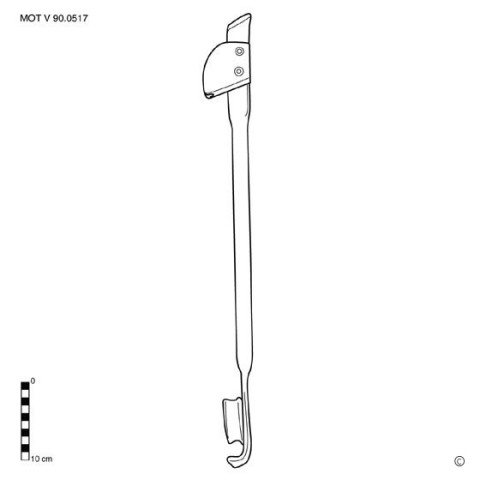
Pipe bender
This text can only be consulted in Dutch. See also the pipe bending tongs.
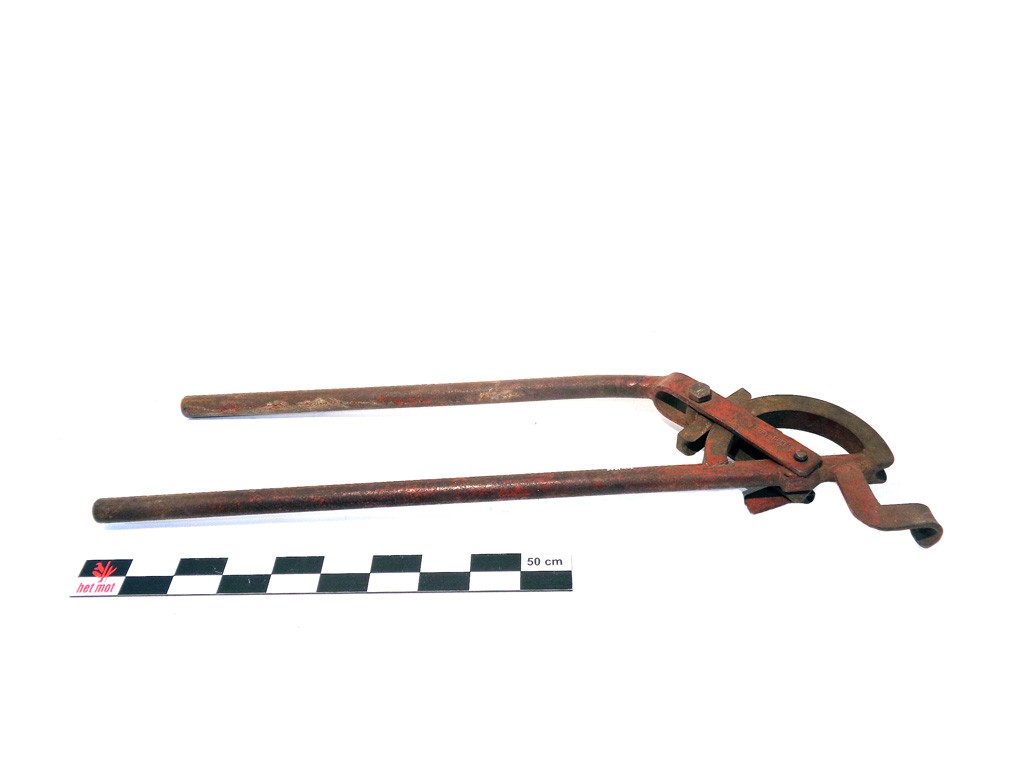
Pipe bending tongs
This text can only be consulted in Dutch. See also the pipe bender.
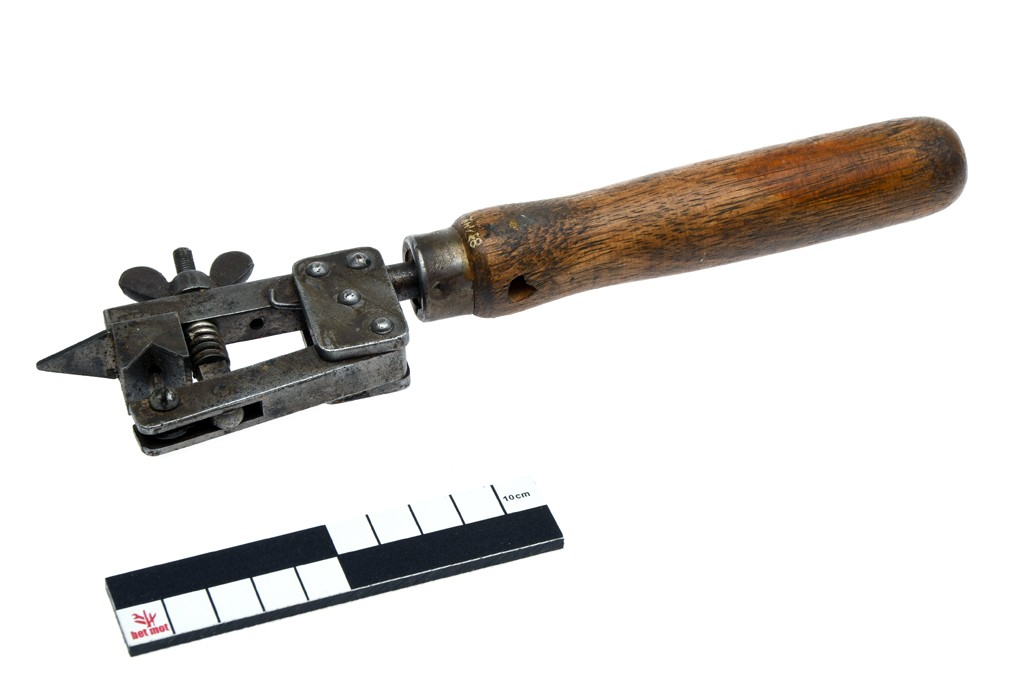
Pipe cutter
This text can only be consulted in Dutch
<https://www.mot.be/resource/Tool/pipe-cutter?lang=nl>
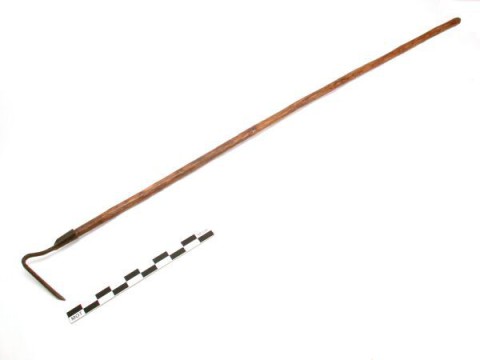
Pipe layer
After the drain laddle has been accurately finished off the drain trench,
the worker, who remains on the edge of the trench - or across it - can
lower the drain pipes with a pipe layer into it and press them against the
other. More technical information on the dutch version of this page. [MOT]
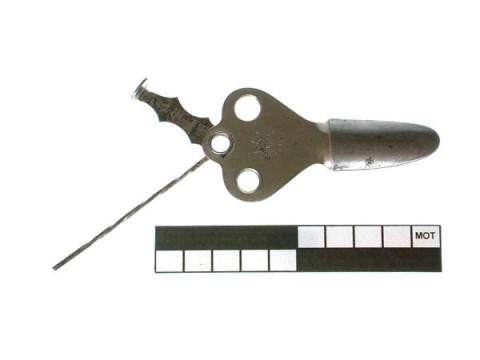
Pipe pick
A pipe pick is an iron rod, bone or wooden stick to remove tobacco or tar from the pipe bowl. It is often combined with a scoop (approx. 4 cm by 2 cm) that can also pick off caked-on tar (see also pipe reamer), and with a pipe tamper (approx. 1 cm in diameter) to press burning tobacco into the pipe (1). [MOT] (1) This three-in-one pipe tool combination is sometimes called a Czech tool.
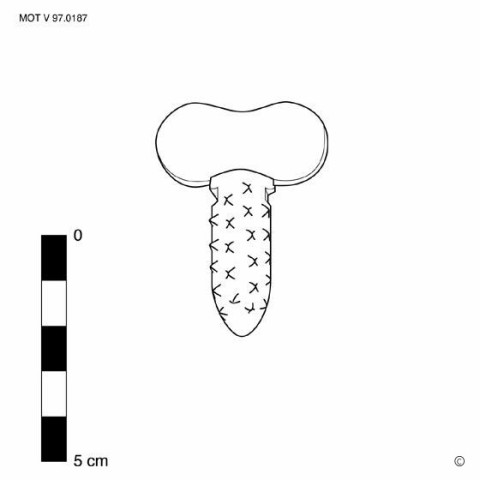
Pipe reamer
This text can only be consulted in Dutch
<https://www.mot.be/resource/Tool/pipe-reamer?lang=nl>
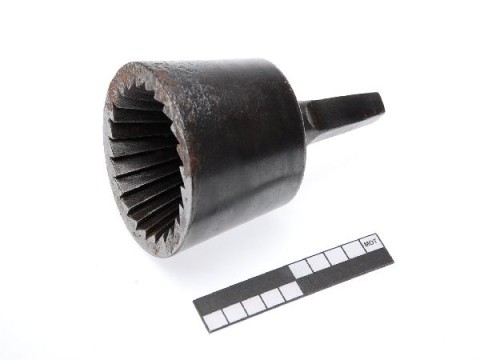
Pipe reamer (fitter)
This text can only be consulted in Dutch
<https://www.mot.be/resource/Tool/pipe-reamer-fitter?lang=nl>
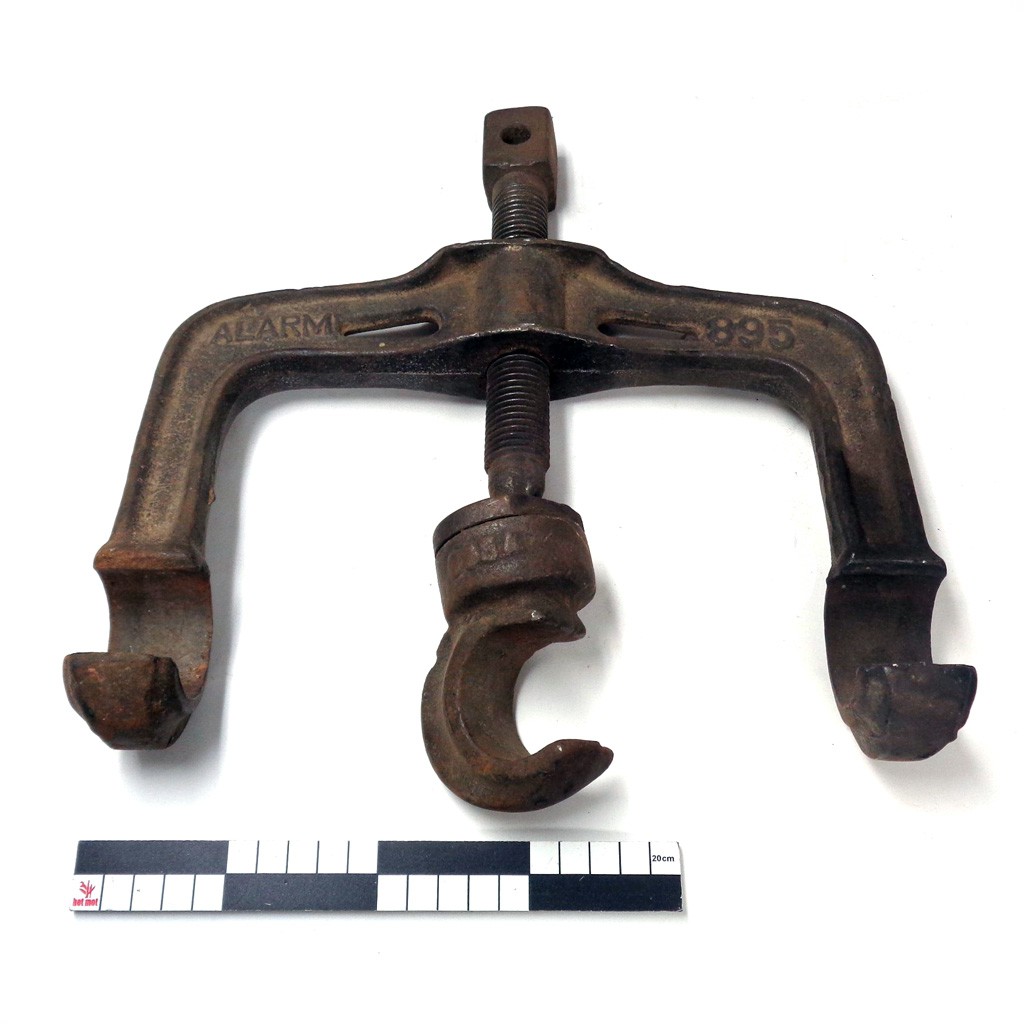
Pipe straightening device
This text can only be consulted in Dutch
<https://www.mot.be/resource/Tool/pipe-straightening-device?lang=nl>
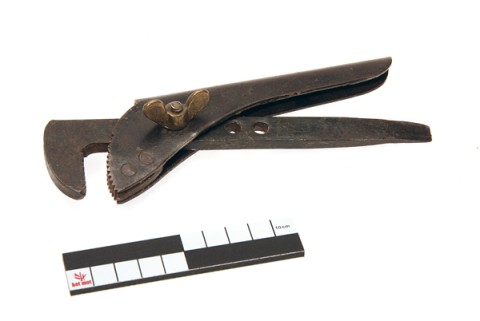
Pipe tongs
This text can only be consulted in Dutch
<https://www.mot.be/resource/Tool/pipe-tongs?lang=nl>
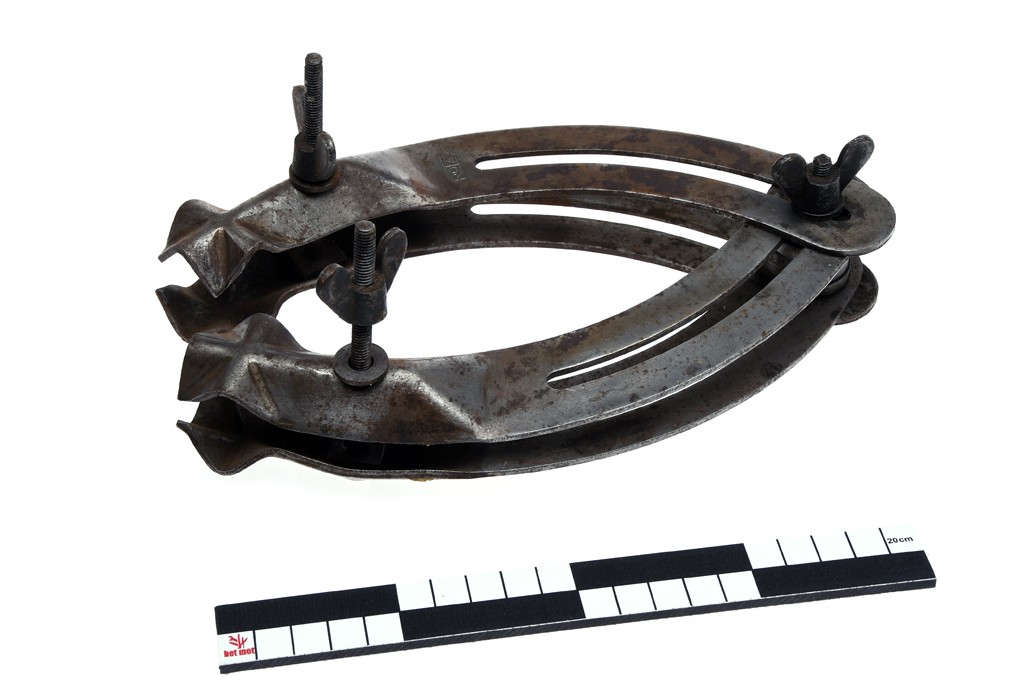
Pipe welding clamp
This text can only be consulted in Dutch
<https://www.mot.be/resource/Tool/pipe-welding-clamp?lang=nl>
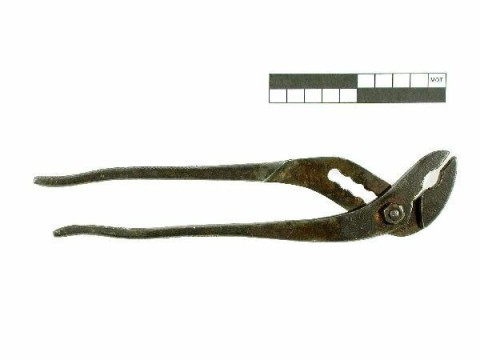
Pipe wrench
This text can only be consulted in Dutch
<https://www.mot.be/resource/Tool/pipe-wrench?lang=nl>
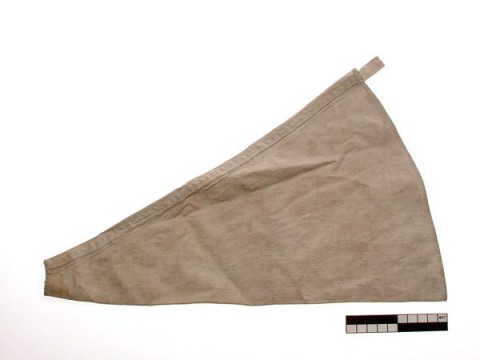
Piping bag
This text can only be consulted in Dutch
<https://www.mot.be/resource/Tool/piping-bag?lang=nl>
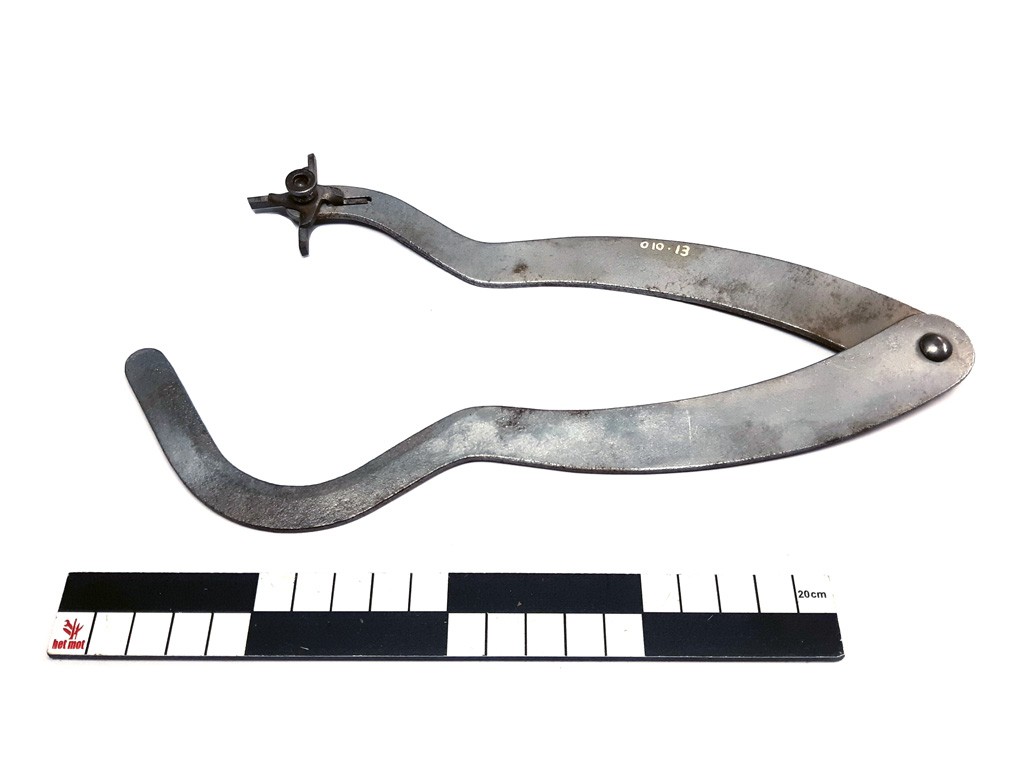
Piston groove cleaner
This text can only be consulted in Dutch
<https://www.mot.be/resource/Tool/piston-groove-cleaner?lang=nl>
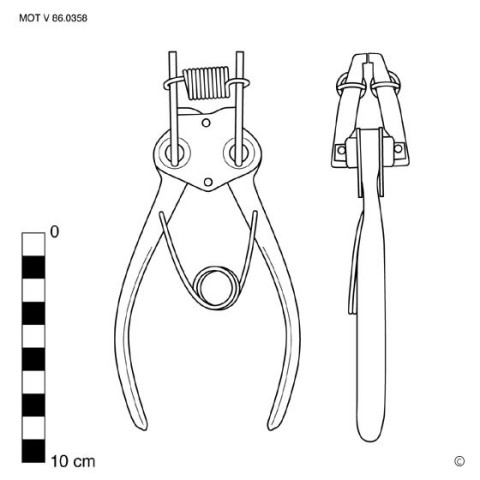
Piston ring pliers
This text can only be consulted in Dutch
<https://www.mot.be/resource/Tool/piston-ring-pliers?lang=nl>
Pit saw
This text can only be consulted in Dutch
<https://www.mot.be/resource/Tool/pit-saw?lang=nl>
